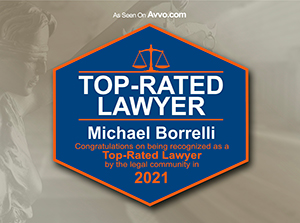On January 10, 2014, Governor Cuomo signed the New York State Commercial Goods Transportation Industry Fair Play Act (“CGTIFPA”). As a result, New York’s Labor Commissioner, Peter Rivera recently announced a new state law for determining whether a commercial truck driver is an employee or independent contractor, and provides penalties for employers who fail to properly protect and classify their employees.
The law is an attempt to protect employees’ rights, especially employees in the commercial goods industry who are often misclassified as “independent contractors.” In the trucking industry, misclassified employees are disproportionately high. Assemblyman Keith Wright has said:
“Misclassification is one of the biggest threats facing workers today. It is indisputable that employers who intentionally misclassify workers deliberately try to strip the protections and benefits that the Legislature has expressly provided for employees…This bill ensures that every New Yorker who performs work transporting commercial goods will be appropriately classified.”
An employee treated incorrectly as an independent contractor, or an employee paid “off the books” can be considered misclassified. Misclassification denies workers rightful benefits such as unemployment and workers’ compensation insurance, wage standards and the fair opportunity to form or join unions.
The law applies to all employers in the commercial goods transportation industry. Commercial goods transportation is defined as the “transportation of goods for compensation by a driver who has a state-issued driver’s license, who transports goods
in New York State and who operates a commercial motor vehicle as defined in Subdivision 4a of Section Two of the Transportation Law.” (Labor Law § 862-a(3). In addition, all vehicles with a gross vehicle weight rating or gross combination weight of 10,001 pounds or more are covered under the new law, as well as some passenger vehicles and vehicles that transport hazardous material. Employers are required to post a notice about the CGTIFPA to all workers at an accessible place on the job site, or penalties may follow. The new law presumes that such workers are employees unless payments for their services are reported on a federal income tax form 1099.
In order to be an actual independent contractor, the individual must be a separate business entity or must be:
1. Free from control and direction in performing the job, both under contract and in fact;
2. Performing services outside of the usual course of business for the employer; and
3. Engaged in an independently established trade, occupation or business that is similar to the service they perform.
To be considered a separate business entity from the business to which services are provided (referred to as the “contractor” below), a sole proprietor, partnership, corporation or other entity must:
1. Be free from direction or control by the contractor over the means and manner of providing the service. The contractor may only specify the desired result of the work or provide direction required by federal rule or regulation.
2. Not be subject to cancellation or destruction when its work with the contractor ends.
3. Have invested substantial capital in its business entity beyond ordinary tools and equipment.
4. Own or lease the capital goods, gain the profits and bear the losses of the business entity.
5. Make its services available to the general public or others in the business community not a party to the business entity’s written contract on a continuing basis.
6. If required by law, provide services reported on a federal income tax form 1099.
7. Perform services for the contractor under a written contract and under the business entity’s name. The contract must state that the relationship between
the contractor and the business entity is that of independent contractors or separate business entities.
8. Obtain and pay for any required license or permit in the entity’s own name or, if allowed by law, pay for the use of the contractor’s license or permit.
9. Hire its own employees without contractor approval and pay those employees without reimbursement from the contractor.
10. The contractor must not represent the business entity or employees of the business entity as its own employees to the contractor’s customers.
11. Have the right to perform similar services for others on whatever basis and whenever it chooses.
The entity must meet all 11 criteria to be considered a separate business entity. An employer that willfully violates CGTIFPA by failing to properly classify its employees will be subject to civil penalties of up to a $2,500 fine per misclassified employee for a first violation, and up to $5,000 per misclassified employee for a second violation within a five-year period. Employers may also be subject to criminal prosecution (a misdemeanor) for violations of the Act. The penalty for the first offense is up to 30 days in jail or up to a $25,000 fine and debarment from Public Work for up to one year. Subsequent misdemeanor offenses are punishable by up to 60 days in jail or up to a $50,000 fine and debarment from performing public work for up to five years. Employers are also subject to all other penalties, taxes and restitution required for violations of Labor, Workers’ Compensation and Tax laws that result from worker misclassification. In addition, if corporate officers and certain shareholders knowingly permit violations to occur, they may be personally liable for fines and penalties assessed under the Act.
If you have employment related questions about CGTIFPA, contact Borrelli & Associates, PLLC immediately for assistance with employment law in New York



















